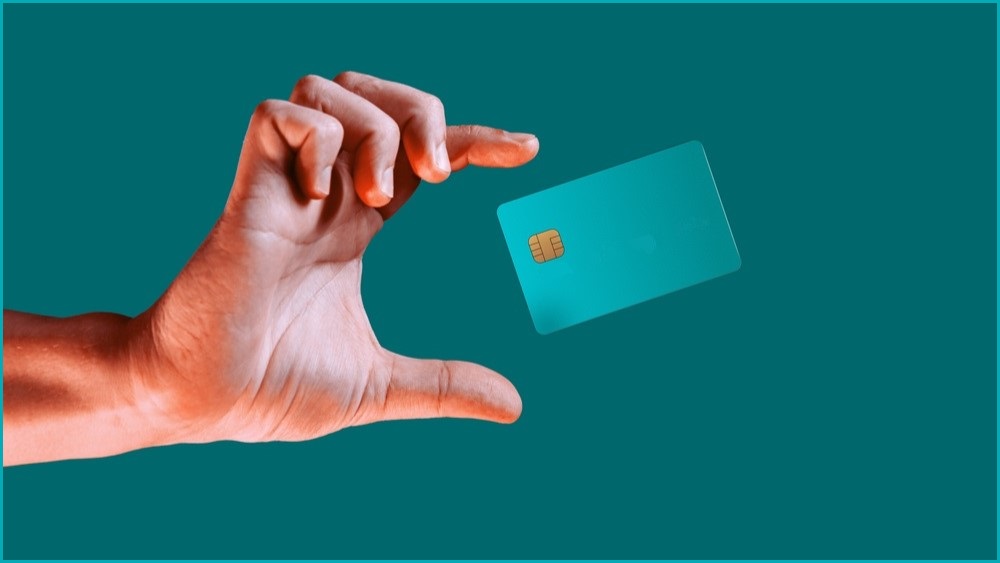Stolen credit card numbers have been a problem for as long as credit cards have been around – which is why customers of AMP’s new mobile-focused digital bank will be given credit cards without any numbers on them when it launches this year.
Numberless cards were introduced overseas years ago, but the small business-focused bank’s new digital-only spinoff – to be based on a mobile app supported by UK-based Starling Bank’s Engine core banking system – will be the first Australian bank to offer them.
Although the cards will still be assigned standard 16-digit card numbers, those numbers won’t physically appear anywhere on the Mastercard-branded cards, and the chip-based cards will work as usual when tapped on a point-of-sale terminal.
Where customers need their card details, for example when buying products online, the numbers will be available through the app – which will ensure security by encouraging customers to use face ID and fingerprint ID features built into their phones.
“We all know that banks simply have to do a better job of supporting the millions of small businesses operating across Australia,” AMP Bank group executive Sean O’Malley said.
“That’s why we’ve developed a new mobile banking platform with leading tech that is proven to make it easier and safer for business owners to operate and administer their businesses.”
The end of card fraud at last?
The push to scrub credit card numbers from physical credit cards reflects a turning point for a banking industry that has carried the burden of card fraud since the 1960s, when credit card receipts were made in triplicate using carbon paper and a physical imprinter.
Subsequent moves to reduce the ease with which card numbers could be stolen drove a shift towards chip-based and contactless cards and, more recently, the addition of a three-digit Card Verification Value (CVV) number printed on the back of the card.
The measures have had limited success, however, with darkweb sites trafficking in card details by the millions – with one study finding Australian card numbers and CVVs being sold for $38 ($US23) each, and other types of cards commanding even higher prices.
Indeed, Australian Payments Network (APN) figures showed that card-not-present (CNP) fraud – the industry term for transactions in which cybercriminals use stolen card numbers for online or phone orders – grew 29 percent to reach $785 million during fiscal 2024.
Mastercard, in particular, has seen numberless cards – which emerged as a favourite of fintechs and virtual banks like Curve, which debuted its numberless card in 2020 – as a solution and will, under a five-year plan recently announced, make them the norm by 2030.
As customers increasingly transition to paying with mobile apps, Mastercard wants to push them away from the traditional 16-digit card number altogether – replacing the numbers with encrypted tokens like those already used for smartphone and smart watch payments.
Tokens can be issued and revoked in seconds, restricted for use at specific merchants, or given built-in time limits – which would, for example, let you set up a new temporary card number that’s only valid during your next overseas trip.
Their flexibility – which led the Reserve Bank of Australia to mandate their adoption this year – is intended to shorten the shelf life of credit-card credentials so they have no value on darkweb markets, leaving cybercriminals with fewer ways to raid your virtual piggybank.
Tokens will also reduce banks’ exposure to fraud and scams – a contentious and increasingly important issue as tech and financial services giants continue to blameshift as they try to offload the responsibility for fighting scams or reimbursing their victims.
Who is using numberless cards?
Mobile wallets, tap-to-pay, QR codes and other digital payments offer both convenience and security, an issue that challenged neobanks like Xinja and led fintechs like Airwallex and Grab to offer virtual cards that are easier to manage than physical ones.
AMP Bank’s new card will put it in the company of global fintechs and banking giants including the USA’s Mesh, Santander Mexico, Chase UK, and Singapore’s Trust Bank – which will be joined later this year by other Australian banks known for dragging their feet.
Taking a leaf from fintechs’ playbooks, for banks like AMP the adoption of numberless cards will be accompanied by the release of a range of new functionality – for example, direct integration with accounting software so your expenditure can be automatically tracked.
Better visibility of spending patterns, and the ability to better confirm the identity of shoppers through their devices, will also reduce overall fraud risk – driving Mastercard Australasia division president Richard Wormald to extol its value for small business.
“Digital banking has transformed the way we manage our money as consumers, but small business owners often miss out on that same seamless experience,” he said.
“With side hustles booming, many Australians are looking for a solution that works for both their personal and business lives…. Numberless cards represent a significant step forward in payment security, offering additional protection against fraud and account compromise.”










